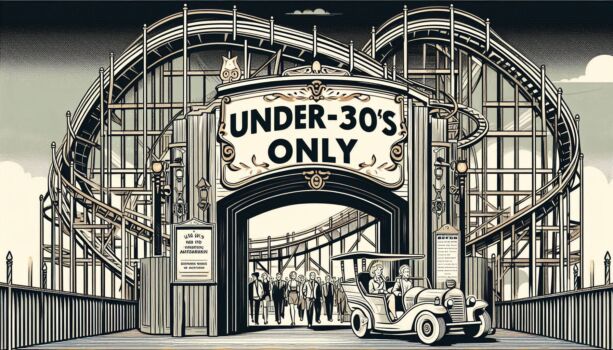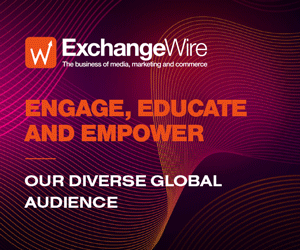Advertising’s Gen Z Obsession Misses the Bigger Picture
by Shirley Marschall on 13th Aug 2025 in News

Shirley Marschall explores advertisers' obsession with Gen Z, and why they'd be wise to cast a wider net.
Are you over 28?
If so, sorry to break it to you but you’re no longer relevant.
Actually, according to the ad world, you may no longer even exist. At least not in any way that matters to digital advertisers.
Right now, the spotlight is fixed on Gen Z. Brands are watching them like hawks, chasing their attention with every dollar and data point available. It’s not just a trend, it’s definitely an obsession.
How else can you explain the ever-increasing digital ad spend, the shift from offline to social platforms, and the flood of research reports stalking Gen Z, desperately trying to crack the code?
Yes, youth is wonderful. And society’s obsession with it? Centuries old. Wrinkles? From Cleopatra bathing in donkey milk to Botox and beyond… avoid at all costs.
The ad industry’s current fixation obviously isn’t about wrinkles, but it’s just as intense. Gen Z’s habits, preferences, and expectations now shape how brands communicate, sell, and build loyalty.
But in chasing youth, we’re ignoring everyone else, including the people actually holding the wallets.
Gen Z: The most studied demographic in advertising
Let’s start with the stats. Gen Z – the youngest generation of adult members, typically born between 1997 and 2012/2013 – makes up about 20% of the US population (18% in the EU). In the UK, they’re the fourth-largest generation; in the US, they rank third, behind Millennials and Boomers.
And yet, the disproportionate investment in Gen Z tells a different story.
Why the obsession? Is Gen Z really that special?
Oh, absolutely! Gen Z is the first truly digital-native, mobile-first, always-online generation. They’ve never lived in a world without smartphones (though many older generations can barely remember it either…). They spend hours a day on their phones. Seamless tech integration is their baseline. They’re not just influenced by digital culture, they are the culture.
And the forecasts back it up:
“Spend Z”? There’s never been a generation more worthy of omnichannel investment. They’re digital. They’re in-store. They’re fluent in social commerce. And they’re as informed as they are influential.
But who’s actually running the show?
From boardrooms to households, other generations are far from obsolete.
And right now, seven (!!) living generations shape the US and UK populations.
Here’s a stat you won’t find on most agency pitch decks:
The average age of a Fortune 500 CEO is 59.2.
That’s not Gen Z – it’s Boomer and Gen X territory.
The typical Fortune 500 CEO: A total Gen Xer. Basically Keanu Reeves (with a boardroom pass).
And when it comes to buying power:
In Europe and North America – where population and wealth growth have plateaued – Gen Z is projected to account for just ~15% of consumer spending by 2030. Meanwhile, Gen X and Boomers will still control more than half.
A (not-so-fictional) snapshot of digital now
Meet our entirely plausible modern family: Boomer parents, two “children”:
Boomer Mom: Smartphone glued to hand. Amazon and Temu power user. Juggles loyalty apps, Netflix, WhatsApp, digital books and now chats with GenAI like it’s her new best friend.
Boomer Dad: iPad loyalist. Digital news addict. Still prints “just in case.” Navigates digital life with mild confusion but wouldn’t give up streaming or online magazines for anything.
Gen X Son: YouTube for everything. iPad by night, smartphone by day. Uses GenAI for everything from cooking to career help.
Millennial Daughter: News junkie, always online. LinkedIn is the only social app she tolerates. Her phone is a patchwork of loyalty cards, shopping apps, newsletters, and AI tools.
None of them are Gen Z. But they are undeniably digital-first. And they’re spending.
Now over to you… raise your hand if:
You’re a Boomer on TikTok.
A Gen X-er scrolling Instagram.
A Millennial binging YouTube.
A Gen Z-er reading news from quality websites.
A Boomer whose screen time beats your teenager’s.
Surprised? Well, you shouldn’t be.
Yes, we always act like every new generation is ushering in the end of marketing as we know it. But the truth? Older generations adapt. Not perfectly. Not instantly. But they do.
A spectrum, not a snapshot
None of this is to say Gen Z doesn’t matter. They do.
They’re shaping what’s next. They’re setting expectations for how digital works.
But when it comes to media strategy, budget allocation, and innovation, the industry would do well to remember: Relevance doesn’t start and end with youth.
We’re not marketing to a moment. We’re marketing to a spectrum of digitally fluent humans across generations. And right now, some of the most active, engaged, and valuable ones are not who you think.
And yet, we’re pouring time, budgets, and briefs into chasing one generation, while others quietly continue to dominate the market.
Well, it’s not the first time this industry has mistaken the loudest signal for the most important one…. Wait, maybe now with AI in the picture, Gen Z is already old news as they’re not AI-native?











Follow ExchangeWire